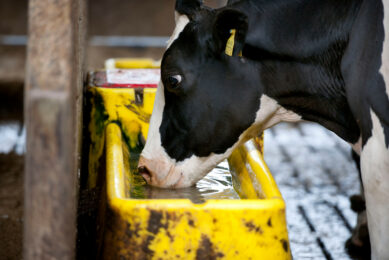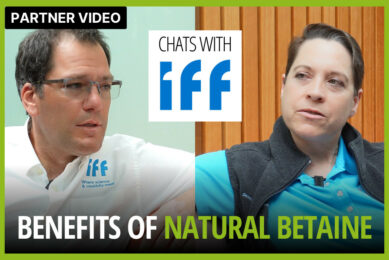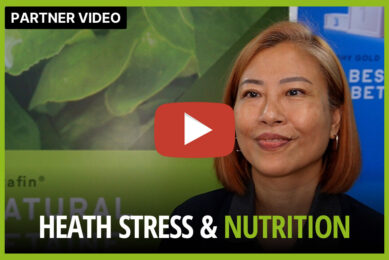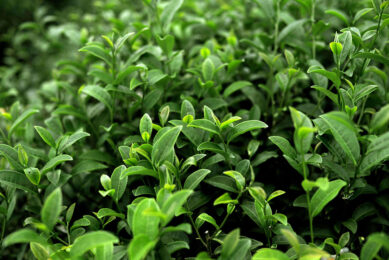Natural betaine: A nutritional aid during heat stress
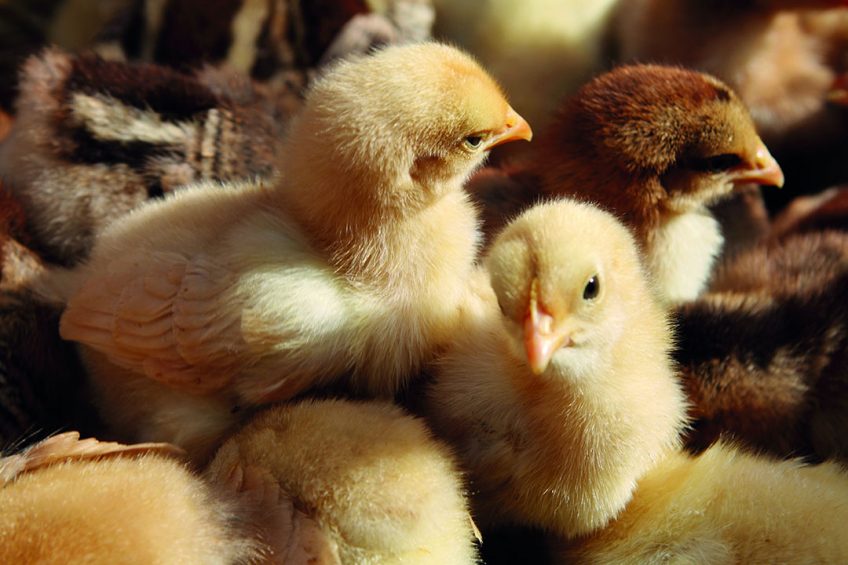
Heat stress is considered a major climate change‐related problem that is affecting the livestock sector even in temperate climates. The intensification of modern livestock production and genetic performance improvement also contribute to the increased incidence of heat stress. Natural betaine can be considered as one major nutritional aid to support animals in heat stress conditions.
All animals and birds have a zone of comfort, the so-called thermal neutral zone – the temperature range where the animals are most comfortable and perform best. Animals become heat stressed when they have difficulty in achieving the balance between body heat loss and body heat production. The imbalance can be the combined result of environmental factors (for example, sunlight, temperature and other ambient conditions) and the natural defence mechanism of the animals (their rate of metabolism and the thermoregulatory mechanisms).
Adverse effects of long-term exposure
Heat stress negatively affects the animal welfare and biological functions, with direct impact on the health status of the animals, their productivity and reproduction. Animals experiencing heat stress will reduce their feed intake. According to scientific data, feed intake can decrease 5 – 25% when temperatures rise above 25°C, depending on relative humidity. Due to reduced intake of nutrients and increased energy demand for thermoregulation, their production may drastically decrease. Additionally, long-term exposure to heat stress has adverse effects on the reproductive performances, which can lead to a high mortality rate and consequential economic losses. All animal species are impacted by heat stress, but poultry seems to be most sensitive and the effects of heat stress on poultry production are well documented (Figure 1).
Figure 1 – Effects of heat stress on poultry physiological and biological functions.
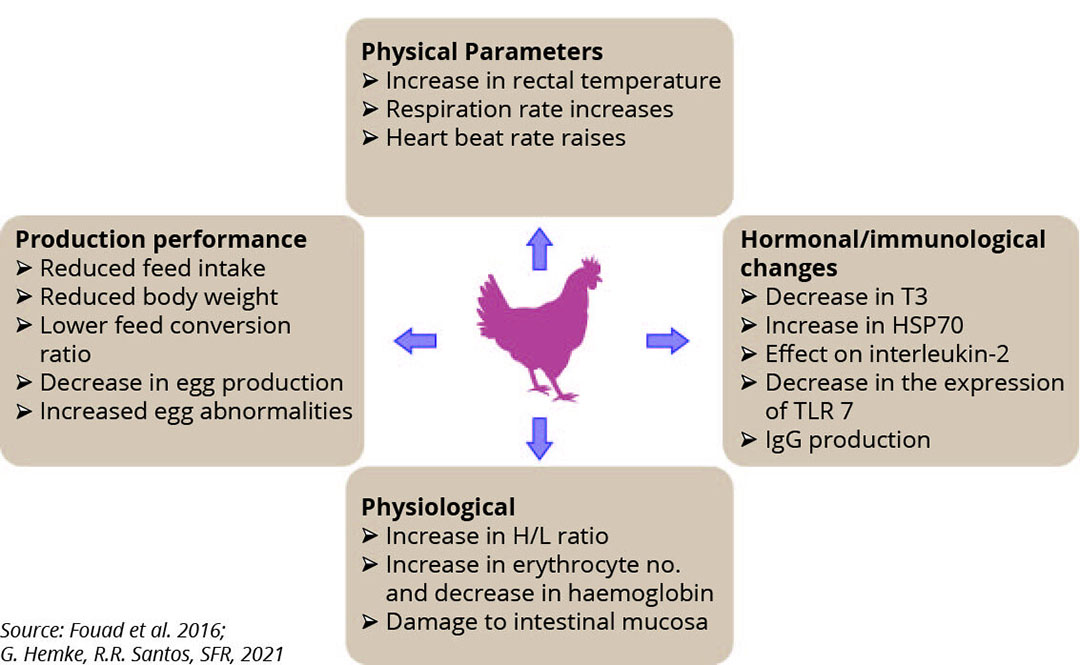
It is not easy to estimate how “comfortable” or “stressful” are the environmental conditions because the number of combinations of environmental factors is high. Poultry management at the farm level, such as biosecurity, cooling systems, ventilation, bedding materials, water quality, and stocking density are playing an important role. Besides technical solutions, nutritional strategies are gaining in interest as a useful solution to counteract heat stress. Farmers can add betaine to their different feeding strategies to mitigate the negative effects of heat stress.
Benefits of using natural betaine
Commonly at the farm level the problems are multifactorial. Over the last years, the use of betaine in animal feed diets has moved from selective utilisation, to that of a core ingredient in key feed formulations for poultry, pigs and even ruminants. The increased use of betaine in animal diets has been driven by producer demands to counter performance challenges under heat stress conditions. The benefits are the result of betaine’s role in two main physiological functions: its osmolyte property and acting as a methyl group donor.
Both functions of betaine play a key role, particularly when animals are under challenging conditions, which include heat stress, temperature stress such as fluctuation between the day and night temperatures, dietary changes and pathogenic challenges (mainly coccidiosis which often causes wet litter). This in turn can lead to further severe complications like respiratory disease or pododermatitis. The fact is, that the higher the challenge, the higher the demand on methyl groups. In such conditions, the mineral and water balance might be disturbed and the cell wall integrity potentially damaged. In the last 10 years, heat stress was not only observed in hot-climatic countries, it was occurring also in temperate countries during summer periods. When experiencing heat stress, the animals try to adapt, and this will cost the energy that should be used for performance responses.
Increased breast meat percentage
Energy is one of the major dietary cost factors in the livestock production and osmoregulatory responses are highly energy consuming processes. Based on several studies, betaine is considered as the most effective osmo-protectant among the organic osmolytes like proline, glycine, glutamine, sarcosine, and taurine. As an excellent organic osmolyte, betaine restores and maintains cellular integrity and functionality, and it prevents dehydration. Betaine, being involved in the energy metabolism, can reduce the required energy for the osmoregulation.
Under environmental stressful conditions, the levels of reactive oxygen species (ROS) will be also increased. As a consequence, oxidative stress will be induced, and the animals will start to produce and release heat shock proteins (HSP) and this may affect the meat quality and the fat deposition. There is more evidence that heat stress can decrease the proportion of breast muscle, while increasing the proportion of thigh muscle as well the fat deposition in broilers and that the addition of betaine can minimise these effects by improving the antioxidative capacity. Similar results were shown in trials carries out in Thailand conducted under heat stress conditions, where the natural betaine treatments could increase the breast meat percentage and lower the abdominal fat deposition when compared to the positive control, the negative control group and to the choline-chloride treatment (Table 1).
ActiBeet: A natural betaine
As the global livestock production is moving away from antibiotic growth promoters and coccidiostats, and with climate change resulting in increasing temperatures, the industry is already facing new challenges. As a multi-functional nutrient, betaine is a proven nutritional aid to protect against heat and osmotic stress, in managing gut health under thermoneutral or hot climatic conditions and for optimising the feeding efficiency in the livestock production. In challenging heat stress conditions, there is no single product able to serve as the optimum solution. Natural betaine can be part of every nutritional solution; ActiBeet as a natural betaine is a non- aggressive, non-corrosive and heat stable component for premix and feed production. With the new crystallisation facility in Austria, AGRANA is expanding its product portfolio with natural crystalline betaine: ActiBeet 96 and ActiBeet 97 for application in feed and drinking water.
References are available upon request




